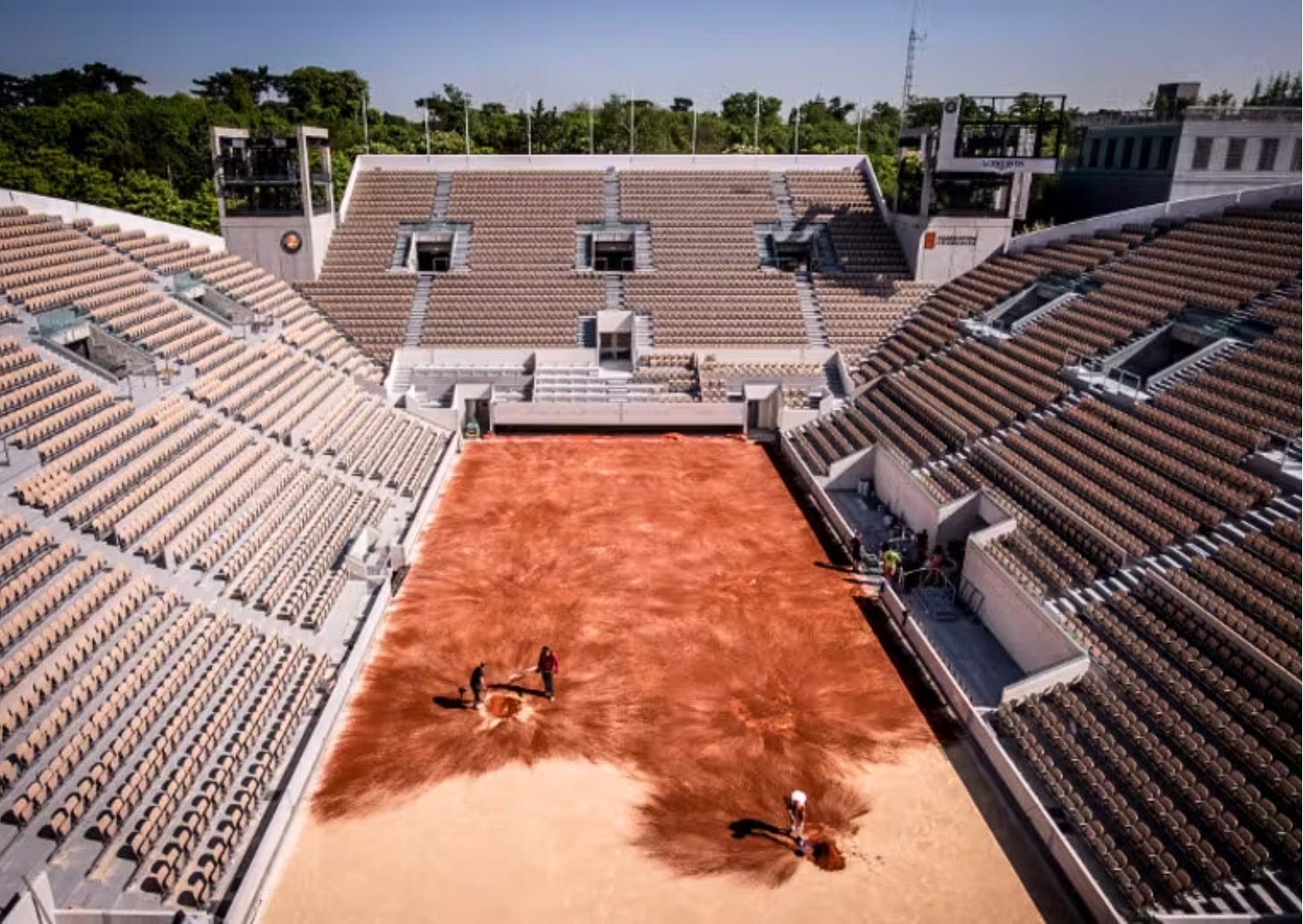The French Open’s Biggest Lie Is Hiding in Plain Sight
You all know I love stadium infrastructure and logistics. Today, we'll dig into how the iconic clay courts at Roland Garros are prepared and maintained by a grounds crew of 100+ staff members.
The French Open has been keeping a secret. Despite Rafael Nadal earning the nickname “The King of Clay” for his 112-4 match record over two decades at the French Open, the clay courts at Roland Garros don’t actually contain any clay soil.
The top surface is made of bricks. No, seriously. Red dust from the same bricks used to build houses throughout France is spread on top of the courts at Roland Garros.
Underneath that red dust, there are four more layers. Stone, crushed gravel, coal residue, and crushed white limestone. Each material plays a crucial role. The French Open’s iconic red dust only covers 2 millimeters of the two-and-a-half-foot-deep court.
In a world where every sports stadium is now utilizing high-tech devices to ensure consistent surfaces, Roland Garros is old-fashioned. There are no moisture meters, humidity sensors, or computerized watering systems in place. The tournament’s 100+ member grounds crew relies on human touch, literally feeling the ground beneath their feet to determine if and how much moisture needs to be added after each match.



